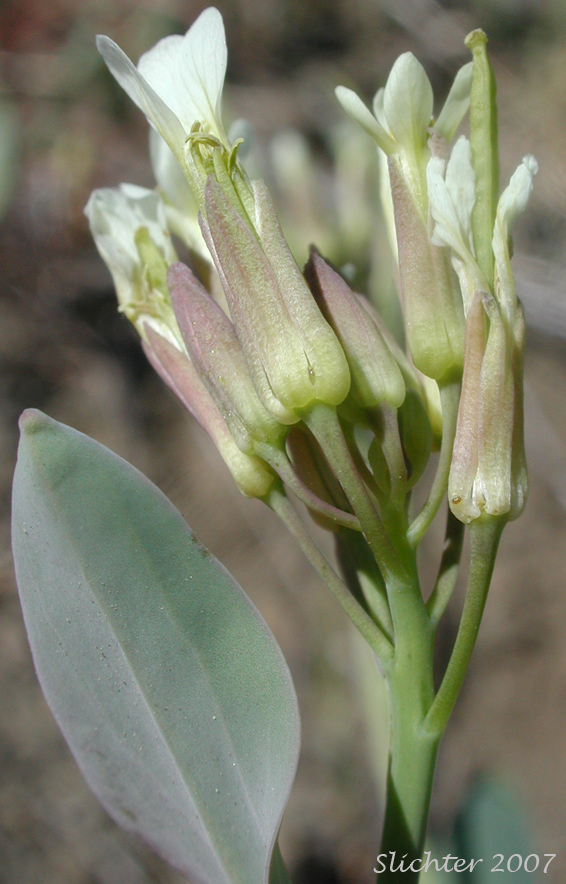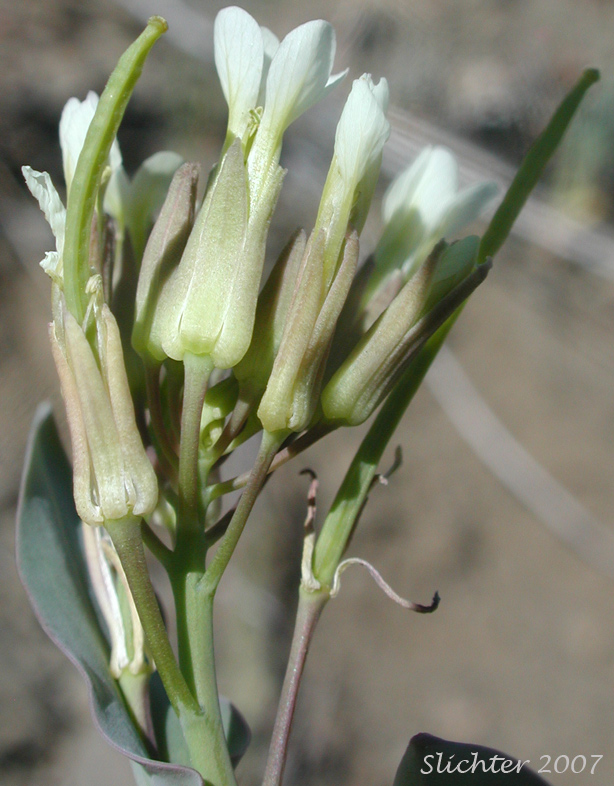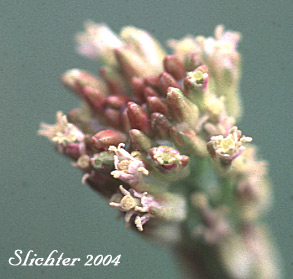
Conringia orientalis
Synonym: Brassica orientalis

Hare's-ear is an annual with simple to sparsely branched stems from 30-70 cm high. The herbage of the stems and leaves is mostly hairless and bluish-green in color. The basal leaves have obovate to oblanceolate blades which taper gradually to their base. The margins are mostly entire and the leaves are 5-9 cm long. The stem leaves are smaller with sessile, clasping, heart-shaped bases. They are oblong-lanceolate in shape.
The inflorescence is a few-flowered corymbiform raceme which elongates after bloom. The flower pedicels ascend and measure 10-15 mm long. The sepals are erect with acute tips and measure from 6-8 mm long. The 4 cream to lemon petals are 7-12 mm long with narrowly obovate blades and a slender claw at the base. The fruits are siliques from 8-13 cm long and from 1.5-2 mm thick. They taper to a point and are moderately constricted between seeds.
A weedy species, hare's-ear may be found in disturbed areas such as roadsides, waste areas, and grazed or disturbed meadows.
Native to Europe, hare's-ear may be found across much of North America. In the Pacific Northwest, it is more common east of the Cascade Mts.



